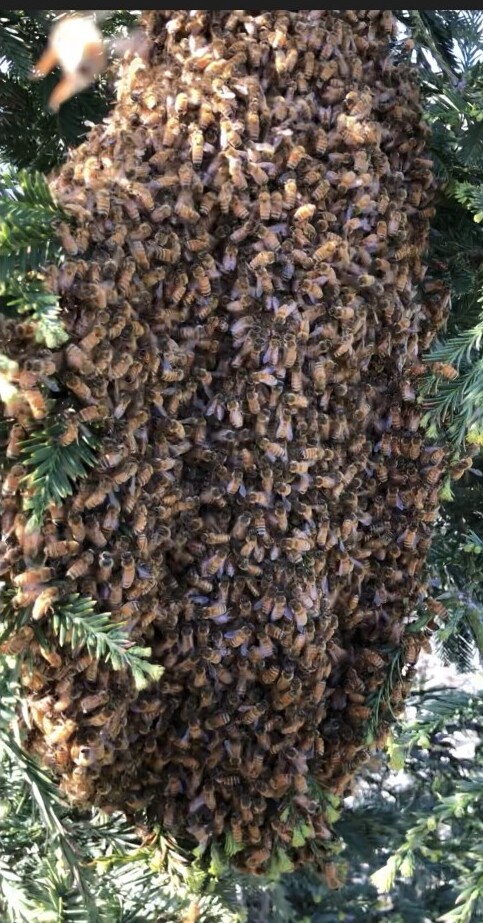So, you’ve noticed a little more buzz around your home than usual, and you’re starting to think you might have a bee problem. Spotting the first signs of a bee infestation early can make all the difference—not just for your safety, but for the bees too.
First up, look out for increased bee activity. If you spot a lot of bees around, especially near windows, vents, or eaves, that’s a red flag. Bees often enter through cracks or small openings, and once inside, they’ll make themselves at home.
Another telltale sign is the sight of a hive or swarm. Bees build their hives in sheltered spots, like under eaves, in chimneys, or even inside walls. If you spot a hive, it’s definitely time to take action.
Hearing is just as important as seeing. A persistent buzzing sound, even when bees aren’t visible, indicates they might have nested inside walls or other hidden areas. This could mean the infestation is more extensive than it appears.
When it comes to identifying bees, it’s useful to know the type of bees you’re dealing with. Honeybees, bumblebees, and carpenter bees each have different behaviors and nesting habits. Honeybees are generally more docile, while carpenter bees can cause more structural damage, tunneling into wood.
Taking on a bee infestation alone can be risky business. Handling bees without the right know-how can lead to stings, allergic reactions, and potentially harmful situations. The last thing anyone wants is a swarm of agitated bees causing chaos.
Lastly, consider the impact on your home and family. Beyond the immediate risk of stings, untreated bee infestations can lead to structural damage from hives, especially if they’ve set up shop in your walls or attic. Plus, honey can attract other pests, causing a whole new set of problems.
When to Consider Professional Bee Removal
Certain situations scream for professional help. If you have severe allergies or anyone in your household does, it’s a no-brainer. A single bee sting can turn into a medical emergency, and best not to risk it.
Large hives or swarms are another clear indicator. If the hive is bigger than a softball or you see hundreds of bees, it’s beyond DIY territory. Professionals have the gear and experience to handle these safely.

Spotting hives in hard-to-reach areas, like high up in a tree or inside your walls, calls for expert removal. The pros have the tools and techniques to reach these spots without causing damage to your property.
Health risks loom large when dealing with bees. It’s not just about stings but also potential respiratory issues. Bee stings can cause serious reactions for some people, and even if you’re not allergic, multiple stings can be dangerous.
Evaluating the infestation’s severity isn’t always straightforward. Professionals can assess the situation accurately, determining whether it’s a small problem or something more widespread. They’ll know the best way to handle things without making it worse.
Local regulations often protect bees, especially honeybees. Beekeepers and pest control experts are familiar with these rules and can ensure the removal process complies with local laws, preserving these important pollinators.
Ensuring Safety for You and the Bees During Removal
Humane removal practices are a must when dealing with bees. Professionals use methods that prioritize the safety of both you and the bees. Instead of extermination, they focus on relocation, ensuring the bees can continue their important role in the ecosystem.
Hiring experienced pros comes with significant benefits. They come equipped with the right protective gear and tools, which means they can handle the job efficiently and safely. No need for you to risk a single sting.
Techniques for relocation are all about preserving the bee population. Beekeepers and pest control experts often work together to move hives to more suitable locations, like local apiaries, where the bees can thrive without causing trouble.
Preserving the bee population is crucial. Bees are vital for pollination, which impacts our food supply and the overall health of our environment. A professional removal not only solves your immediate problem but also contributes to ecological balance.
Aftercare and Prevention: Keeping Bees at Bay
Once the bees are gone, it’s time to think about keeping them from coming back. Start with a thorough inspection of your home for potential entry points. Seal up any cracks, gaps, or holes in your walls, roof, and foundation. It’s amazing how a tiny opening can become a bee’s front door.
Securing entry points should be a priority. Install screens on vents and windows, and make sure that chimneys have caps. Even the smallest gaps can be a welcome invitation for bees looking for a new home.
Monitoring for bee activity regularly helps catch new hives early. Keep an eye on areas where bees previously nested, and any other sheltered spots around your property. Early detection can make future problems much easier to handle.
Regular maintenance and professional check-ups are a smart move. Consider scheduling routine inspections with a pest control expert. They’ll check your property for signs of bee activity and address potential issues before they escalate.
If you would like to receive the monthly newsletter from Beewhisperer360 drop your email address in the comments section.
